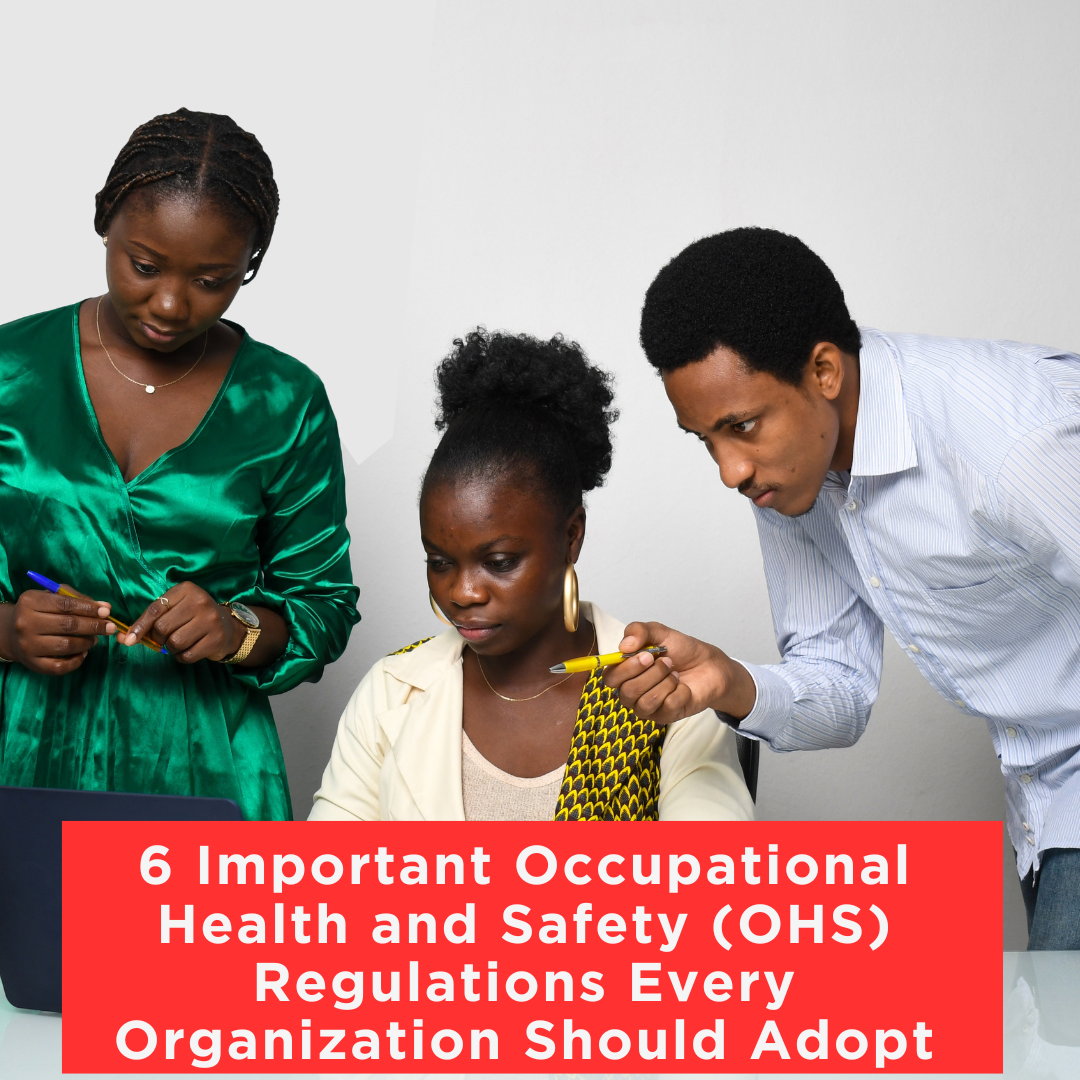Creating a safe and healthy workplace is vital for the well-being of employees and the success of any business. A secure work environment reduces the risk of injuries, illnesses, and accidents, leading to higher productivity and job satisfaction. Employers and employees both play a critical role in achieving a safe and healthy workplace, and Occupational Health and Safety (OHS) regulations are an essential component of this effort.
Occupational Health and Safety (OHS) regulations are designed to protect workers from harm and ensure a safe working environment. These regulations cover a wide range of workplace hazards, including physical, chemical, biological, ergonomic, and psychological hazards. By adhering to OHS regulations, employers can create a workplace free from hazards, and employees can work safely, increasing their confidence in their employer’s ability to protect their health and well-being.
Here are some important regulations organizations should adopt:
Conducting Ergonomic Assessments
Companies should undertake ergonomic evaluations in the workplace to detect and evaluate ergonomic risks. This should be done on a frequent basis to ensure that workstations and responsibilities are tailored to the employees’ needs.
Set Up a Comfortable Environment
Companies should offer ergonomic equipment such as seats, workstations, and keyboards to reduce strain on the body and prevent injuries. This equipment should be configured to accommodate the employee’s height, weight, and other physical features.
Make Use of Adjustable Workstations
Workstations should be able to support a variety of employees and tasks. Adjustable seats, desks, and computer monitors should be provided to guarantee that employees work in a comfortable and secure environment.
Encourage Frequent Rest Breaks
Companies should urge employees to take regular breaks to avoid fatigue and bodily aches. Quick, frequent breaks can minimize physical strain and prevent injuries.
Promote Physical Activity
Organizations should encourage physical exercise and provide employees the opportunity to stretch and move throughout the day. This can decrease exhaustion and injuries.
Promote Open Communication
Organizations should encourage open communication between employees and management to identify and resolve occupational hazards in a timely manner. This can prevent injuries and foster a safe working atmosphere.
Employers and employees must be aware of OHS regulations to follow the required guidelines and protocols. Employers must provide a safe working environment while employees must also take responsibility for their safety and their colleagues’ safety by adhering to workplace policies and procedures and reporting on any unsafe conditions or incidents.
However, non-compliance with OHS regulations can result in severe consequences, such as fines, legal action, and reputational damage. Employers who fail to comply may also face increased workers’ compensation costs and lost productivity due to workplace accidents or injuries.
Occupational Health and Safety (OHS) regulations play a crucial role in creating a safe and healthy workplace as it not only protects employees’ health and well-being but also improves productivity and ensures the long-term success of the business. By implementing and following OHS regulations, businesses can maintain a positive reputation and attract new clients and employees.
At Medbury, we understand the importance of this responsibility, and we offer services that help employers, HSE managers, and HR personnel meet safety standards. Our healthcare solutions are tailored to fit your company’s unique needs, ensure that your organization stays on top of their game. Let us help you create the perfect work environment for employees! Contact us today to learn more.







No Comments